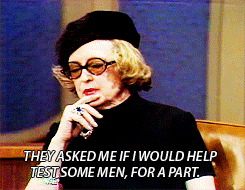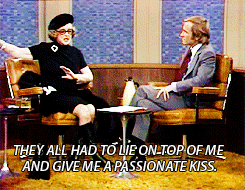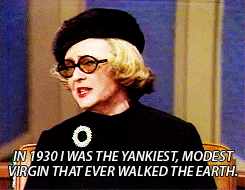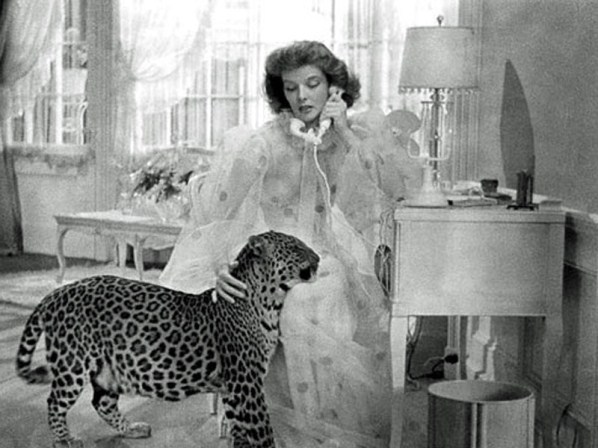As I found Precode movies from a documentary, they
have been one of my first sources of information and, as you can imagine, I have
watched heaps of them. There are not many that deal specifically with the era,
but several touch on the topic of censorship when discussing film history as a
whole. So, this is my version of the Academy Awards or BAFTA’s – the Precode
Documentary Awards. They are eligible if they are a film or episode and touch
on 1930’s censorship or Hollywood history.
Honourable Mentions
The first of my awards are honourable mentions to
two documentary series that devote one episode to the subject of Precode. The
first is the wonderful TCM series ‘Moguls and Movie Stars: A History of
Hollywood’ (2011). I would recommend this documentary to anyone wanting a
complete overview of Hollywood from the pioneering days until the end of the
studio era in the late 1960’s. The episode ‘Brother Can You Spare a Dime’ is
especially good because it conveys both the movies and movie stars of the era
and the historical events that shaped them. Also, another great feature is the
discussions that come as part of the handy box-set where a number of notable
film historians talk about the period.

The second is a more racier look at Hollywood and is
called, ‘Sex, Censorship and the Silver Screen (1996)’.
It is a six part series covered just as the title denotes: sex in cinema. Firstly,
I must warn everyone that it is an MA 15+ (I’m not sure what this is in
American ratings) and does show a lot of explicit sexual content. However, it
shows a complete and informed view of sex and sexuality in Precode Hollywood –
in I think episode 2 – and, as it was a big part of the era, the documentary is
very useful. Also, it is narrated by Raquel Welch who does a great job and is
perfect for the job.
Third Place

This goes to a very well made and visually appealing
documentary, ‘Why Be Good? Sexuality and Censorship in Early Cinema’.
Initially, I have to say how difficult it was to find this film. I had seen a
clip of it on Youtube and was looking for over three months before I was able
to locate a copy in Australia. This documentary deals with censorship, not only
in the 1930s, but spends a lot of time discussing silent movies, peepshows and
Victorian society. As, I said before, it is very beautifully constructed with
pleasing graphics, text and backgrounds. Also, it has a catchy introduction
song and clip that launches the film brilliantly. Like many of the Precode documentaries,
it discusses mainly female characters and actresses and is very thorough with
this. I also appreciated the many interviews included – most notably the ones
with Leatrice Joy Gilbert talking about her father, John Gilbert, and Greta
Garbo – as it broke up the segments well. I would recommend this documentary to
lovers of silent film censorship and feminist history – as well as Precode
history – and it is this trait that made this movie third and not first.
Second Place
This documentary is another great TCM creation. It
differs from the others by discussing censorship as a whole – men and women,
sex, drugs and violence – instead of centring on one main aspect of it. I loved,
loved the introduction sequence, with Micky Rooney watching the post-code films
and then getting red and flustered when the scene showed some racy Precodes.
The documentary as a whole was very entertaining, informative and thorough. It
introduced me to several films I had not seen before, such as, ‘Madam Satan’
and ‘Midnight Mary as well as giving me a deeper understanding of the others I had
seen. The interviews, which made up most of the hour film, were the standout
feature. Most notably Mark Vieira, John Landis, Hugh Hefner, Jack Valenti and
Rudy Behlmer gave the best information and appeared really passionate about the
topic. The archive clips are weaved well throughout this well structured piece
which I would recommend to any Precode newbie.
First Place
My top prize goes to the brilliant, unfaultable documentary
‘Complicated Women’ (2003). This is the film that drew me into the world of
Precodes and before seeing it, I just put those odd movies in a separate category,
similar to indie films. The story of me finding the film is quite straightforward,
I was looking on YouTube for clips in classic femme fatales (as I was in my
Lauren Bacall/ Rita Hayworth phase at the time) and accidently began watching
the documentary thinking it was about film noir. Instead, I became infatuated -
either through Jane Fonda’s beautiful voice or the seductive graphics – with the
women discussed and Precode Hollywood.
In my opinion there is nothing wrong with this documentary.
It is brilliantly structured, thorough
and completely entertaining. I had no understanding of Precode Hollywood before
watching it and felt totally comfortable and well informed by the end of it.
Just a couple points in its favour; firstly, Jane Fonda does a fantastic job and
encompasses the themes of the film and the tone wonderfully. Also, the interviews are simply amazing, at
first I had little idea who some of the women were, but after a little research
and expanding my Precode library, I was astonished to find that many of the interviewees
were big stars in the Precode era. These include: Frances Dee (Blood Money, Little Women), Karen
Morley (Scarface, Mata Hari), Kitty Carlisle (Murder at the Vanities) and Mae Madison
(So Big, Footlight Parade). I know I have been drowning on about this documentary
but I cannot recommend it enough. Every classic film lover should watch it; it
is available at YouTube, like most of these documentaries, to access it click
here.
 |
| The book, by Mick Lasalle, that the documentary was based on |
Happy viewing!!!













_02.jpg)



































